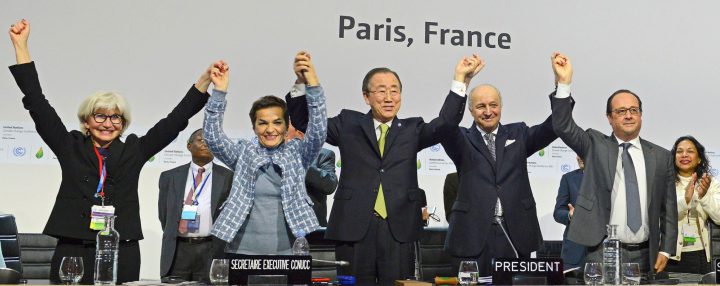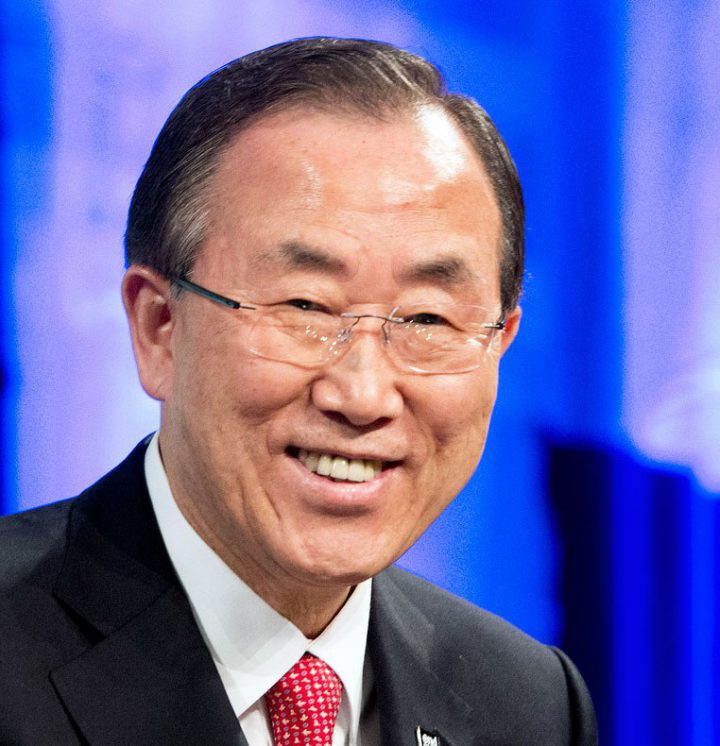The Paris Climate Agreement
What's in the historic UN climate deal?

By Gareth Redmond-King
@gredmond76Share
Last updated:
The 2015 UN climate conference in Paris (COP21) opened with the largest gathering of world leaders in history, and closed with adoption of the Paris Agreement, a new global accord on tackling climate change. The Agreement marks the first time that virtually every country on Earth has pledged to constrain its greenhouse gas emissions with a view to keeping global warming since pre-industrial times below the commonly-used ‘danger threshold’ of 2 Celsius.

The Paris climate summit, which UN Secretary General Ban Ki-moon described as a ‘resounding success for multilateralism’, saw 195 countries agree a set of measures aimed at curbing climate change.
The Agreement is a vital step for the UN Framework Convention on Climate Change (UNFCCC), which was established in 1992 to prevent dangerous climate change.
It sets a goal for constraining global temperature rises and contains provision for pledges by countries aimed at meeting it. It includes measures to help poorer nations prepare for unavoidable climate impacts, and to ensure rich nations provide financial and technical assistance (as they are obliged to do). It establishes a process to increase carbon-cutting ambition over time and a mechanism for ensuring countries are transparent.
While the deal was, to some extent, harmed by Donald Trump's June 2017 decision to cease major emitter, the United States' participation in global progress, the response from international leaders, businesses and individual US states ensured that progress was not derailed.
In detail
Mitigation: Commitments to reduce greenhouse gas emissions
Even before the summit started, almost every nation in the world put forward pledges, known as Intended Nationally Determined Contributions (INDCs), to constrain their greenhouse gas emissions with a target date of 2025 or 2030. If implemented, these pledges would limit global warming to about 2.7 degrees Celsius, avoiding the very worst impacts of climate change.
INDCs - who, what, how?
More than 180 countries submitted INDCs during 2015. They include:
The US pledged to reduce greenhouse gas emissions by 26-28% below 2005 levels in 2025
China pledged to cut its greenhouse gas emissions per unit of GDP by 60-65% from 2005 levels by 2030 and peak its emissions by 2030
India intends to reduce emissions intensity by 33-35% by 2030
The EU committed to cut greenhouse gas emissions by 'at least' 40% from 1990 levels by 2030
Russia committed to 'limiting anthropogenic greenhouse gases to 70-75% of 1990 levels by the year 2030' [i.e. a 25-30% reduction from now]
Costa Rica confirmed its commitment to become carbon-neutral by 2021
Bhutan, which is ‘carbon-negative’ (it absorbs more than it emits, owing to forests), pledged to remain so.
Many developing countries’ INDCs are contingent on receiving appropriate levels of assistance from rich nations.
Following the Paris Agreement, countries will build on their INDCs with Nationally Determined Contributions (NDCs), which must be no less ambitious than existing pledges.
Temperature goal: Agreement to keep global warming ‘significantly below’ 2° Celsius
This is more ambitious than the 2°C target agreed in 2010. Governments then regarded 2°C as the ‘danger threshold’ for global warming, but the more ambitious target reflects new science showing significant impacts occurring with lower temperature change.
The deal also says countries should aim for the even more ambitious target of 1.5°C. This is particularly important to people living in low-lying coastal areas as it would limit sea-level rise.
The Agreement also has a long-term goal of net zero emissions this century.
Global greenhouse gas emissions should peak ‘as soon as possible’, and balance should be achieved between emissions and absorption (for example, of carbon dioxide by forests) during the second half of the century. This means virtually, perhaps completely, eliminating fossil fuel use without carbon capture soon after 2050.
‘Rachet and review’: A process to monitor progress and increase ambition
In order to increase efforts to tackle climate change and to move closer to the temperature goals, countries will review and strengthen their emission-cutting pledges every five years, starting in 2018 with a ‘facilitative dialogue’. This will take stock of the collective efforts of countries to date with a view to informing future commitments.
There will also be a ‘global stock-take’ every five years, beginning in 2023, to evaluate implementation of the Agreement. This process should close the gap between the 2.7°C warming likely with existing commitments and the Agreement’s overall aim of keeping warming ‘well below 2°C’.
Finance: Help from rich countries for poorer ones
Rich countries have agreed to continue providing money for poorer countries, known as ‘climate finance’, to help them adapt to climate impacts and build a low-carbon economy. So far they have promised £100 billion per year by 2020, and the Paris Agreement implies that this will be increased by 2025.
Donald Trump signalled that the US would no longer be willing to make financial contributions under the Paris Agreement. The rest of the developed world strongly condemned the decision to walk away from the deal, amid suggestions that the loss of US cash would be replaced by other nations.
Rich countries will also help poorer ones with irreversible and permanent damage from climate change, an issue known as ‘loss and damage’, although details are still to be finalised.
The Agreement also bolsters support for international cooperation on helping countries adapt to climate change by developing new technologies and building adaption capacity.
Transparency: Monitoring and verification
Governments agreed the outline of a system for monitoring and verifying that countries are doing what they have pledged. The transparency framework aims to provide clarity on how countries are cutting emissions, adapting to climate impacts and providing (or spending) climate finance. Compliance will be ‘non-punitive’.
Richer countries will have more stringent measures to follow than Least Developed Countries and Small Island Developing States, as the Agreement recognises their ‘special circumstances’.
The Paris Agreement was designed to come into force when it was signed or ratified by at least 55 nations counting for at least 55% of global greenhouse gas emissions.
Reaction
Reaction to the Paris Agreement was almost universally positive. David Cameron said that the world had taken ‘…vital steps to ensure that our children and grandchildren will see that we did our duty in securing the future of our planet’. US President Barack Obama highlighted the legacy to future generations, saying that the Paris Agreement ‘sends a powerful signal that the world is firmly committed to a low-carbon future’.

UN Secretary-General Ban Ki-moon highlighted similar themes, saying that ‘markets now have the clear signal they need to unleash the full force of human ingenuity and scale up investments that will generate low-emissions, resilient growth. What was once unthinkable has now become unstoppable.’
Some climate scientists warned however that the Agreement would not prevent dangerous climate change and would in the future necessitate the use of the ‘full spectrum of geoengineering’ to mitigate the worst impacts of warming.
The Trump effect
The June 2017 announcement that the US would no longer participate in the Paris Agreement sent shockwaves around the world. Claiming that the deal penalised American workers and placed the US at a competitive disadvantage compared with global competitors. Many of the figures used in Mr Trump's speech were thoroughly debunked, however the increasingly isolationist tone of the US administration was not well received on an international scale.
The President's decision was immediately condemned on a global scale. Heads of states, business leaders and politicians inside the US slated the move, while leaders in the EU and China announced a new partnership to ensure that global progress on climate change was not derailed.
At home, a national coalition of states, cities, companies, organisations and citizens - We Are Still In - committed to continued climate action and targets, mitigating some of the impact on US emissions of Trump's approach. Meanwhile, the market for coal worked against Trump's commitment to defend and grow the US coal industry.
The return of the US
In the 2020 US Presidential elections, climate was a major theme. In January 2021, therefore, President Joe Biden took office with significant promises to ramp up US climate action. He reversed the decision on pulling out of the Paris Agreement within days, and hosted world leaders at a climate summit within his first 100 days.
Now, the US has a much more ambitious NDC again - its domestic target rated 'almost sufficient' by Climate Action Tracker. There remain significant domestic political barriers to delivery of the policies necessary for achieving the target, but Biden and his climate envoy John Kerry have ensured that the US has returned to the international stage on climate.
Share